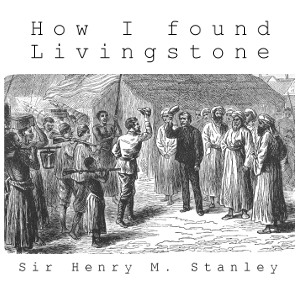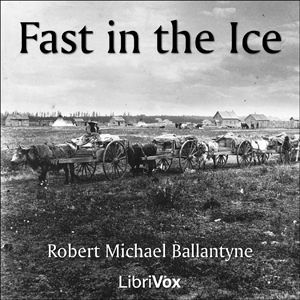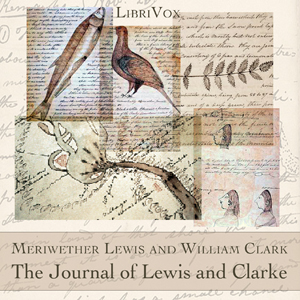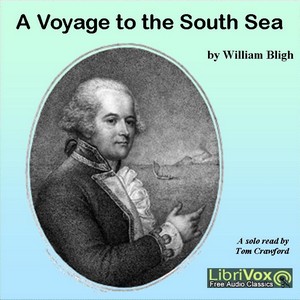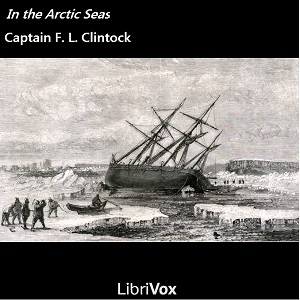This week, to celebrate Columbus Day, LibriVox volunteers bring you six recordings of Columbus by Joaquin Miller. This was the weekly poetry project for the week of October 8th, 2006.
6 episodes
Sir Henry Morton Stanley is famously quoted for saying "Dr Livingstone, i Presume?". Born in Wales, he migrated over to the United States at the age of 18, he eventually became an overseas correspondent for the New York Herald. In 1869 Stanley was told by James Gordon Bennett Jr to find Livingstone, a scottish missionary and explorer. When Stanley commented on the cost Bennett's reply was:
"Well, I will tell you what you will do. Draw a thousand pounds now; and when you have gone through that, draw another thousand, and when that is spent, draw another thousand, and when you have finished that, draw another thousand, and so on; but, FIND LIVINGSTONE."
How I Found Livingstone is Stanley's personnel account of his trip from Zanzibar to Lake Tanganyika on this quest, including time spent exploring the area with Livingstone.
- Written by Lizzie Driver (Modified from Wikipedia)
43 episodes
At the age of 16 Ballantyne went to Canada and was six years in the service of the Hudson's Bay Company. His rule in writing, being in every case, was to write as far as possible from personal knowledge of the scenes he described.In this book he details the lives of the crew as they must overwinter in the frozen north including their meetings with Eskimos and bears and their struggles with disease. This is a realistic account of what life was like for the explorers of the Arctic. (summary by Esther, adapted from wikipedia)
11 episodes

Roosevelt's popular book Through the Brazilian Wilderness describes his expedition into the Brazilian jungle in 1913 as a member of the Roosevelt-Rondon Scientific Expedition co-named after its leader, Brazilian explorer Cândido Rondon. The book describes all of the scientific discovery, scenic tropical vistas and exotic flora, fauna and wild life experienced on the expedition. One goal of the expedition was to find the headwaters of the Rio da Duvida, the River of Doubt, and trace it north to the Madeira and thence to the Amazon River. It was later renamed Rio Roosevel. Roosevelt's crew consisted of his 24-year-old son Kermit, Colonel Cândido Rondon, a naturalist sent by the American Museum of Natural History named George K. Cherrie, Brazilian Lieutenant Joao Lyra, team physician Dr. José Antonio Cajazeira, and sixteen highly skilled paddlers (called camaradas in Portuguese). The initial expedition started on December 9, 1913, at the height of the rainy season. The trip down the River of Doubt started on February 27, 1914.
During the trip down the river, Roosevelt contracted malaria and a serious infection resulting from a minor leg wound. These illnesses so weakened Roosevelt that, by six weeks into the expedition, he had to be attended day and night by the expedition's physician, Dr. Cajazeira, and his son, Kermit. By this time, Roosevelt considered his own condition a threat to the survival of the others. At one point, Kermit had to talk him out of his wish to be left behind so as not to slow down the expedition, now with only a few weeks rations left. Roosevelt was having chest pains when he tried to walk, his temperature soared to 103 °F (39 °C), and at times he was delirious. He had lost over fifty pounds (20 kg). Without the constant support of his son, Kermit, Dr. Cajazeira, and the continued leadership of Colonel Rondon, Roosevelt would likely have perished. Despite his concern for Roosevelt, Rondon had been slowing down the pace of the expedition by his dedication to his own map-making and other geographical goals that demanded regular stops to fix the expedition's position via sun-based survey.
Upon his return to New York, friends and family were startled by Roosevelt's physical appearance and fatigue. Roosevelt wrote to a friend that the trip had cut his life short by ten years. He might not have really known just how accurate that analysis would prove to be, because the effects of the South America expedition had so greatly weakened him that they significantly contributed to his declining health. For the rest of his life, he would be plagued by flareups of malaria and leg inflammations so severe that they would require hospitalization.
The racial attitudes reflected in Roosevelt's American history do not seem to carry over into his attitude toward the native Americans he encounters on this trip, although his enthusiastic anticipation of the development of the virgin wilderness he is crossing may be jarring to some contemporary readers. (Summary adapted from Wikipedia by Karen Merline.)
36 episodes
"The expedition of Messrs. Lewis and Clarke, for exploring the river Missouri, and the best communication from that to the Pacific Ocean, has had all the success which could be expected. They have traced the Missouri nearly to its source; descended the Columbia to the Pacific Ocean, ascertained with accuracy the Geography, of that interesting communication across the continent; learned the character of the country, its commerce and inhabitants; and it is but justice to say that Messrs. Lewis and Clarke, and their brave companions, have, by this arduous service, deserved well of their country." This volume is the 1840 edition with woodcut images and an Indian vocabulary. They may be viewed by clicking on the text URL. (Summary in quotes by President Thomas Jefferson)
28 episodes
A Voyage to the South Sea, undertaken by command of His Majesty, for the purpose of conveying the Bread-fruit tree to the West Indies, in His Majesty’s ship The Bounty, commanded by Lieutenant William Bligh. Including an account of the Mutiny on board the said ship, and the subsequent voyage of part of the crew, in the ship’s boat, from Tofoa, one of the Friendly Islands, to Timor, a Dutch settlement in the East Indies. (Summary is the full title)
21 episodes
The famous writer of great adventure stories Jules Verne wrote also several lesser known, but good non-fiction works. "Celebrated travels and travellers" tells the story of geographical discovery in the same well written and precise manner we are used to finding in Verne’s fiction books. This book is divided into 3 volumes. This is the first volume, named the "Exploration of the World" and it covers the period in the World's history of exploration from B.C. 505 to the close of the 17th century. The second and third volumes are respectively entitled "The great navigators of the 18th century" and "The great navigators of the 19th century".Coordinated by Kristine Bekere and Kajo.
45 episodes
The Worst Journey in the World is a memoir of the 1910–1913 British Antarctic Expedition led by Robert Falcon Scott. It was written and published in 1922 by a survivor of the expedition, Apsley Cherry-Garrard, and has earned wide praise for its frank treatment of the difficulties of the expedition, the causes of its disastrous outcome, and the meaning (if any) of human suffering under extreme conditions. (Summary by Wikipedia) Volume 2 HERE
30 episodes
The Worst Journey in the World is a memoir of the 1910–1913 British Antarctic Expedition led by Robert Falcon Scott. It was written and published in 1922 by a survivor of the expedition, Apsley Cherry-Garrard, and has earned wide praise for its frank treatment of the difficulties of the expedition, the causes of its disastrous outcome, and the meaning (if any) of human suffering under extreme conditions. (Summary by Wikipedia) Volume 1 HERE
29 episodes
In 1857, Lady Jane Franklin, the wife of Sir John Franklin, who went missing with his entire crew during his 1845 expedition to discover the Northwest Passage, commissioned Captain Francis McClintock to investigate what had happened to the expedition, and purchased for him the small steam yacht known as the 'Fox'. This is McClintock's own account of the two year voyage of the 'Fox'. Following an initially unsuccessful attempt to cross the Davis Strait, the 'Fox' was forced to spend the first winter trapped in the sea-ice off the coast of Greenland. After the next year's thaw, McClintock eventually reached the islands of the Canadian Arctic, where an extensive search finally revealed the grisly truth of the fate of Franklin. (Summary by Patrick Eaton)
19 episodes
Francisco Pizarro (1471 - 1541) was born into poverty, the illegitimate son of a Spanish soldier. After a brief career as a swineherd, he volunteered to join an expedition to the colony of Darien in Panama. He rose through the ranks to become right hand man of the governor. After hearing rumours of a rich country of gold to the south, he received permission from the king of Spain to lead an expedition to explore and attempt to conquer the Peruvian empire. This biography describes how, with an army of only 168 men, he was able to subjugate an entire nation. - Summary by Patrick Eaton
19 episodes

In the early days of the penal colony at Sydney, rumour was rife among the convicts of another colony beyond the Blue Mountains and perhaps a route to China. In the hope of quelling the rumours, Governor John Hunter put together a bizarre exploration party, charged to travel as far into the interior as it could. The party consisted of four convicts, two guides and four soldiers to protect the guides from the convicts. The leader of the party was John Wilson, an ex-convict who had elected to live in the bush among the Aborigines, who had named him Bunboee. He was accompanied by John Price, Hunter’s adventurous young servant and, as the only literate member of the party, its diarist.
The party set out in January 1798, but three of the convicts soon tired and returned with the four soldiers, leaving Wilson, Price and Roe, the fourth convict, to press on to the south-west. After six days travel they reached high ground over the junction of the Wollondilly and Wingecarribee rivers, from where they saw the open country beyond the mountains. A month later, Wilson and Price, this time accompanied by Henry Hacking and a man called Collins, set out again and this time reached the summit of Mount Towrang, where they looked over the Great Divide.
John Price’s diaries of the two expeditions were handed over to Hunter, who gave them to Sir Joseph Banks in England. The diaries languished among Banks's papers for many years until they were acquired by the government of New South Wales, and published as an appendix to Volume III of the Historical Records of New South Wales in 1895. R. H. Cambage then meticulously traced the routes of the two journeys in a paper read to the Royal Australian Historical Society in 1919. Cambage mistakenly identified the author of the diaries as one 'Barracks' (hence his confusion when the name Price crops up in the diary), but John Price’s authorship and part in the expeditions was finally established in 1960 by A. H. Chisholm in The Romance of the Lyrebird, who credited Wilson with the discovery of the lyrebird.
My reading of Price's diaries and Cambage's commentary on them was inspired by Chris Cunningham’s The Blue Mountains Rediscovered, which sets out to scotch the myth that the ‘heroes’ Blaxland, Lawson and Wentworth were the first to cross the Blue mountains and look on the interior in 1813. They had probably been crossed several times before and I was pleased to discover that the leader of the first documented crossing was a Lancashire man, or at least a man who had made his way to Australia from the Wigan assizes, having been sentenced to transportation for the theft of nine yards of velveret to the value of tenpence. (Summary by Phil Benson)
3 episodes
This volume, entitled "The great explorers of the 19th century", forms the third of three volumes under the general title of "Celebrated travels and travellers".Volume three comprehends:"The dawn of a century of discovery" (part I, chap. I), "The exploration and colonization of Africa" (part I, chap. II), "The oriental scientific movement and American discoveries" (part I, chap. III), "Voyages round the world, and Polar expeditions" (part II, chap. I), "French circumnavigators" (part II, chap. II), "Polar expeditions" (part II, chap. III, part I) and "The North Pole" (part II, chap. III, part II). - Summary by Kajo
42 episodes

Am 29. Juni 1871 stach das Schiff » Polaris« von New York unter Kapitän Franz C. Hall in See zur Erforschung des Hochnordens. Der Dampfer nahm seinen Weg über Neufundland an der Westküste Grönlands entlang durch den Smith-Sund und überwinterte in einer Bucht dieser Küste, die Hall »Polaris-Bay« taufte. Dort wurde ein Observatorium errichtet, und von dort aus unternahm man Schlittenreisen nach Süden und Norden. Hall starb nach Rückkehr von einer solchen Fahrt am 8. November 1871. Im August 1872 mußte infolge Kohlenmangels und eines Lecks die Heimfahrt angetreten werden. Am 15. Oktober erlitt die »Polaris« Schiffbruch. Ein Teil der Besatzung, 14 Mann, blieb beim Wrack zurück und baute eine Hütte, »Polaris-Haus«, für den Winter; der andere Teil wurde von einem Eisfelde nach Süden getrieben, auf das man in der Voraussicht des Schiffbruches schon eine Nothütte, alle Boote, viele Geräte, Waffen und Proviant für die gesamte Mannschaft gebracht hatte. Auf der Scholle befanden sich der Meteorologe Friedrich Meyer, der Navigationsgehilfe Tyson, der Koch, der Steward, sechs Matrosen und zwei Eskimofamilien, bestehend aus zwei Männern, Hans und Joseph, zwei Frauen, drei Mädchen im Alter von drei, acht und zehn Jahren, einem sechsjährigen und einem am 12. August geborenen Knaben. - Zusammenfassung von Availle
Part of an account of the last voyage of the ship Polaris. After the shipwreck, 19 members of the crew were trapped on an ice floe, slowly moving south. They were rescued after 196 days on sea.
5 episodes

While stories of the Polar explorers and their efforts to reach the Poles have been told again and again, the constant renewal of expeditions adds, every year, fresh incidents to the record, until it may almost be said that the fascination of the frozen regions is as inexhaustible as the list of Polar heroes is illimitable. Nor is the interest confined solely to the achievement of modern explorers. However great the results of their exertions may be, the fact that, in spite of all the advantages conferred by recent scientific discovery and modern appliances, the explorers of to-day have failed to penetrate the uttermost secrets of the worlds of ice, renders more impressively heroic the struggles of the earlier travellers, whose equipment, viewed in comparison with that of modern man, was apparently so inadequate and often inappropriate.
No series of Polar adventure stories would be complete without a prominent place being given to the earlier explorers, and especially to that British hero, Franklin, whose name is so inseparably associated with the history of Arctic exploration. The account of his daring voyages and of his tragic end, at the moment of victory, has already been given in many a form; but the tale is one which will stand re-telling for generations yet to come. In the present instance it has been of necessity briefly written, but in such a manner as will, it is hoped, without loss of interest, render clear a comparison of the conditions under which he and his brave companions worked and fought to their death, with those that existed for later expeditions and especially the expeditions of Nansen, Peary, and Abruzzi.
The Antarctic, equally with the Arctic, now commands the attention of man. In the South, as in the North, the British race has again produced explorers who have fought their way into the icy fastnesses. From the time that Captain Cook sailed round the unknown southern ocean, more than a century ago, the British flag has waved in the forefront of the advance. The work which Sir James Ross began, over half a century since, has now been carried farther than ever it was anticipated it could be. By the voyage of the Discovery, the Antarctic continent has been revealed to within five hundred miles of the Pole, and in the gallant exploits of the commander, Captain Robert Scott, there are many who see a repetition of all that made the name of Franklin so immortal.
The source of the information on which these stories are based (as is frequently mentioned in the text) is the personal narrative of the explorer concerned, where available; and if the interest aroused in any of them requires more to satisfy it than the exigencies of space renders possible in this volume, the attention which will thereby be drawn to the more comprehensive records will stand as a slight acknowledgment of the indebtedness of the writer of these re-told stories to the authors of the original narratives. - Summary by the Preface
22 episodes
Mungo Park, a Scottish surgeon and explorer, was sent out by the 'Association for Promoting the Discovery of the Interior of Africa' after Major Houghton failed to return, to discover the if the River Niger was a tributary of either the river Senegal or Gambia in South Africa. This is the story of his first trip. The journey had many challenges, such as language, religions, imprisonment and robbery. Most of the trip he had nothing but his tattered clothes, a horse, a pocket compass and his hat where he kept his notes. After first following the Gambia River, he finally was the first European to reached the Niger River at Ségou. He continued along the Niger another 80 miles to Silla, where he had to turn around as he had no way of continuing without procuring more supplies. He then returned to England by boat, via America. (Summary by Lynda Marie Neilson)
29 episodes
St. Nicholas was a popular magazine aimed at young folks in the late nineteenth – early twentieth century. Its articles were usually well-written and often by authors who became famous later on. This collection of articles published in 1920, aimed at the youth market, can be easily enjoyed by adults as well. - Summary by David Wales
16 episodes
The Arctic has always been a fascinating area for us. This is true today just as much as in Adolphus Greely's time. In 1912, Greely published this volume of notable Arctic explorations and the explorers. The modern reader can follow a very readable account of the successes and failures of these early explorers comfortably from the armchair, and learn a lot of history in the processes. - Summary by Carolin
22 episodes
In 1888, George Broke with Harold Topham and William Williams, made the first exploration of the Alaskan Mt. St. Elias range, including the crossing of the great Malaspina Glacier and an attempt on the S.E. face of Mt. St. Elias itself. The journey is described in the interesting work With Sack and Stock in Alaska, vividly detailing the country visited and the characters met along the way. - Summary by Fritz
8 episodes
A highly descriptive and engaging narrative from one of America's beloved nature writers, this short piece shows well Thoreau's great love of the early American wilderness. Be transported to the deep woods of Maine and share in both Thoreau's delight in nature and also his admiration of those others who have a deeper connection with the natural world around them. (Summary by Falassewen)
11 episodes

Obra escrita por Antonio Pigafetta, cronista cuyas notas y testimonio han servido para dar a conocer la que fue la primera circunnavegación del globo en la Historia de la Humanidad, al tiempo que constituyeron la principal evidencia de la época a favor de la teoría de que la tierra es redonda. En estás páginas se narra la hazaña lograda en el viaje comandado por Fernando de Magallanes y Juan Sebastián Elcano. Aventura que comenzaron 239 hombres en agosto de 1519 en su periplo hacia lo desconocido y concluyeron tan sólo 18 en septiembre de 1522 al dar la vuelta completa al mundo. Hay pocas palabras que puedan hacer justicia en un resumen del fascinante relato histórico, humano y de aventuras del que se cumplen ahora 500 años. En este proyecto además de los 4 libros originales en los que Pigafetta dividió su obra, se incluyen una breves notas biográficas sobre los protagonistas y un prefacio en el que se detalla brevemente en contexto histórico en el que tuvo lugar este viaje y su trascendencia . (Summary by Epachuko)
15 episodes
For more than three hundred years an intense desire has been felt by explorers to discover and reveal to the world the secrets of the immediate regions of the North Pole. Nor has this desire been confined to mere adventurers. This volume sketches the latest American efforts (from the second Grinnel expedition to that of the "Polaris"), second to no others in heroism and success, and abounding in instructive and intensely interesting adventures both grave and gay.
- Summary from the preface
45 episodes
This book tells the story of exploration in America in the words of the explorers themselves. It consists of extracts from narratives of the early discoverers and explorers of the American continent from the Northmen in 10th century to 17th century Massachusets Bay Colony. - Summary by Kikisaulite
79 episodes
Libro de viajes de Federico García Lorca, donde recoge sus impresiones y pensamientos íntimos ante la contemplación de distintos lugares de la geografía española que recorrió en su juventud y que como él mismo decía "[i]los recuerdos de viaje son una vuelta a viajar, pero ya con más melancolía y dándose cuenta más intensamente de los encantos de las cosas. (Summary by Epachuko)
48 episodes

